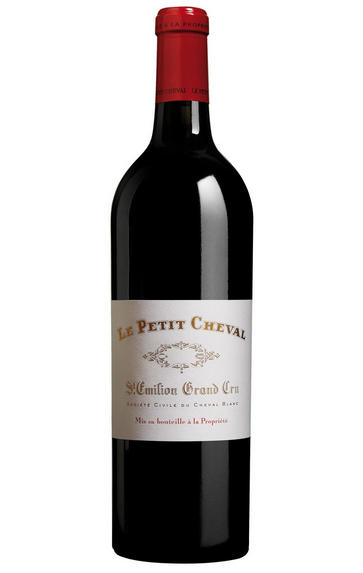
2021 Le Petit Cheval, St Emilion, Bordeaux
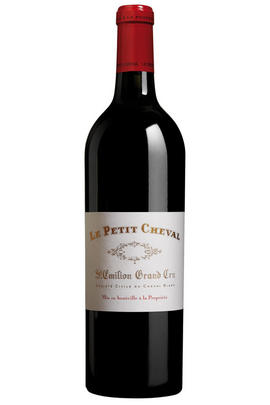
Critics reviews
The 2021 Le Petit Cheval, which, according to Pierre Lurton, contains more Cabernet Sauvignon in the blend, has attractive iris flower and incense aromas on the nose, along with plenty of dark berry fruit and just a touch of crushed stone. The palate is medium-bodied with sappy black fruit on the entry, that Cabernet imparting a Médoc-like structure, and a strict, saline finish. I can see this aging well in bottle while waiting for the Grand Vin to reach its drinking plateau.
Drink 2025 - 2038
Neal Martin, vinous.com, (May 2022)
White pear, sage, mango and citrus set the tone for this vibrant and juicy vintage of Le Petit Cheval. A touch of fennel and aniseed bitterness on the finish contrasts with a lovely density through the mid palate, and the whole thing is given lift, salinity and spice from waves of subtle oyster shell, lime zest and ginger. Lingering finish, great quality. Very few Bordeaux whites have this kind of long barrel ageing on lees, 10% new oak, spread across a mix of 600l demi-muids for 20% of the volume and the rest in larger oak casks in a range of sizes. Estate director Pierre-Olivier Clouet. Ideal with a 30 minute carafe.
Drink 2023-2034
Jane Anson, Inside Bordeaux, JaneAnson.com
Representing 13% of the estate's production (a further 18% was sold off in bulk), the 2021 Le Petit Cheval exhibits aromas of cherries, sweet berries, loamy soil, tobacco leaf and spices. Medium to full-bodied, lively and nicely concentrated, with powdery tannins and a saline finish, it's a blend of 60% Merlot, 33% Cabernet Sauvignon and 7% Cabernet Franc.
William Kelley, Wine Advocate (Apr 2022)
Dark-fruit aroma. Long and linear on the palate, the Cabernet Sauvignon marking the blend (first time this much in Petit Cheval). Crunchy fruit with a firm grain of tannin. Structure for a bit of age.
Drink 2027 - 2036
James Lawther, jancisrobinson.com (May 2022)
This is a very structured Petit Cheval, because of the higher than normal cabernet sauvignon in the blend. It seems more like Pauillac, with blackcurrants and chewy yet polished and intense tannins. It needs time. 60% merlot, 33% cabernet sauvignon and 7% cabernet franc.
James Suckling, jamessuckling.com (May 2022)
About this WINE
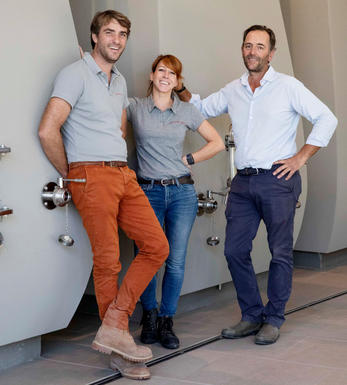
Château Cheval Blanc
Château Cheval Blanc, a 1er Grand Cru Classé (A) is unquestionably the leading estate in St. Emilion. It is located in the north-west of the St. Emilion appellation, bordering Pomerol.
Cheval Blanc's vineyards (Merlot 39%, Cabernet Franc 57%, Malbec 3%, Cabernet Sauvignon 1%) enjoy a variety of soils: gravel, clay and sand, all underpinned by an impermeable sedimentary rock (`crasse de fer'). Fermentation and maceration last 4 weeks in stainless steel vats, followed by 18 months' maturation in new oak barrels.
Cheval Blanc produces the most famous Cabernet Franc-based wine in the world and present régisseur Pierre Lurton is amongst the most talented winemakers working in Bordeaux today. Cheval Blanc requires a minimum 10 years of bottle age and the best vintages can last for 50 years or more.
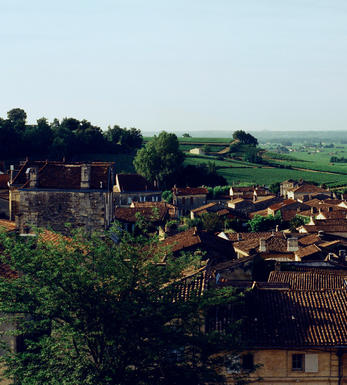
St Émilion
St Émilion is one of Bordeaux's largest producing appellations, producing more wine than Listrac, Moulis, St Estèphe, Pauillac, St Julien and Margaux put together. St Emilion has been producing wine for longer than the Médoc but its lack of accessibility to Bordeaux's port and market-restricted exports to mainland Europe meant the region initially did not enjoy the commercial success that funded the great châteaux of the Left Bank.
St Émilion itself is the prettiest of Bordeaux's wine towns, perched on top of the steep limestone slopes upon which many of the region's finest vineyards are situated. However, more than half of the appellation's vineyards lie on the plain between the town and the Dordogne River on sandy, alluvial soils with a sprinkling of gravel.
Further diversity is added by a small, complex gravel bed to the north-east of the region on the border with Pomerol. Atypically for St Émilion, this allows Cabernet Franc and, to a lesser extent, Cabernet Sauvignon to prosper and defines the personality of the great wines such as Ch. Cheval Blanc.
In the early 1990s there was an explosion of experimentation and evolution, leading to the rise of the garagistes, producers of deeply-concentrated wines made in very small quantities and offered at high prices. The appellation is also surrounded by four satellite appellations, Montagne, Lussac, Puisseguin and St. Georges, which enjoy a family similarity but not the complexity of the best wines.
St Émilion was first officially classified in 1954, and is the most meritocratic classification system in Bordeaux, as it is regularly amended. The most recent revision of the classification was in 2012
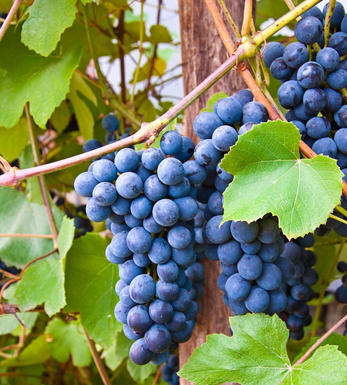
Merlot/Cabernet Franc
Merlot and Cabernet Franc are grape varieties commonly used in Bordeaux-style blends, particularly in the Bordeaux region of France. When these two grapes are blended, they can create a wine that combines the best characteristics of each variety.
Merlot is known for its smoothness, soft tannins, and ripe fruit flavours. It often contributes black cherry, plum, and chocolate flavours to the blend. The grapes are relatively easy to grow and ripen earlier than other Bordeaux varieties, making them versatile for blending.
Cabernet Franc, on the other hand, adds structure, depth, and complexity to the blend. It typically brings aromas of red fruits such as raspberry and strawberry, along with herbal notes like bell pepper and tobacco. These grapes have thinner skins and can be more challenging to cultivate, requiring specific growing conditions to reach their full potential.
When Merlot and Cabernet Franc are combined, the result is a well-balanced wine with various flavours and aromas. The blend often exhibits a Bordeaux wine's medium to full body, along with a smooth texture and moderate tannins. The specific flavour profile can vary depending on the proportions of each grape in the blend and the terroir and winemaking techniques employed.


Buying options
Add to wishlist
Description
Merlot 60%, Cabernet Sauvignon 33%, Cabernet Franc 7%
Petit Cheval represents only 18% of the production in 2021, but all the components have grand-vin potential. That is especially true of this year’s Cabernet Sauvignon, which was elbowed out of the grand vin by the excellence of the Cabernet Franc. The record-high Cabernet Sauvignon drives this wine in a specific direction: graphite to the fore, the floral elements more hidden. The tannins are especially fine-grained and sophisticated. Though not as heady and ethereal as the grand vin, there is a beautiful balance and sheen to the fruit and the finish here. Drink 2025-2035.
Our score: 16/20
Berry Bros. & Rudd (April 2022)
wine at a glance
Delivery and quality guarantee